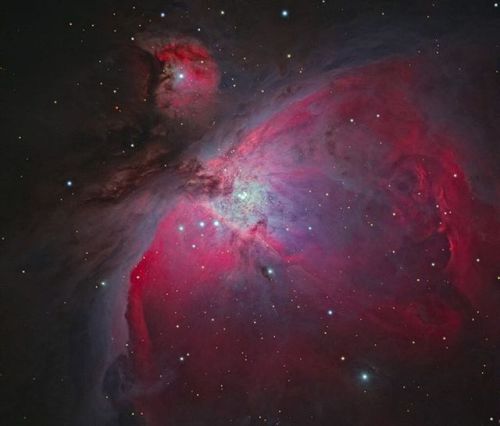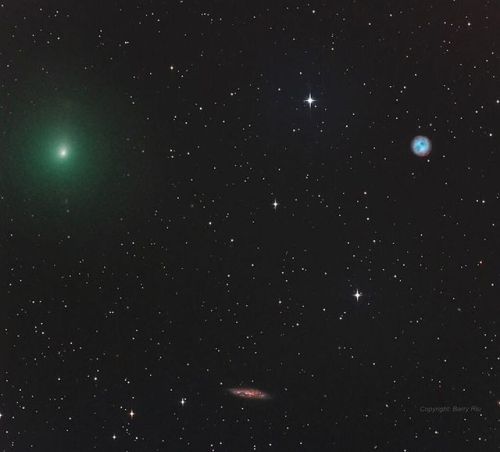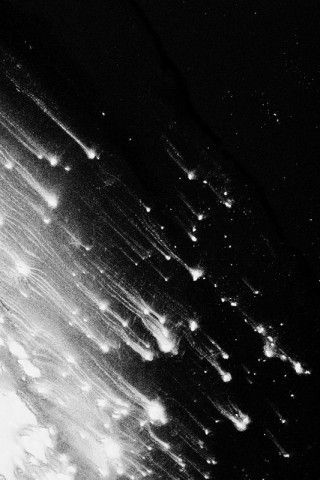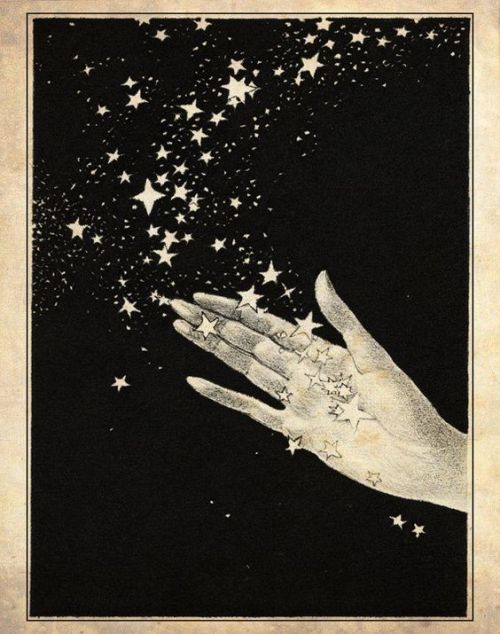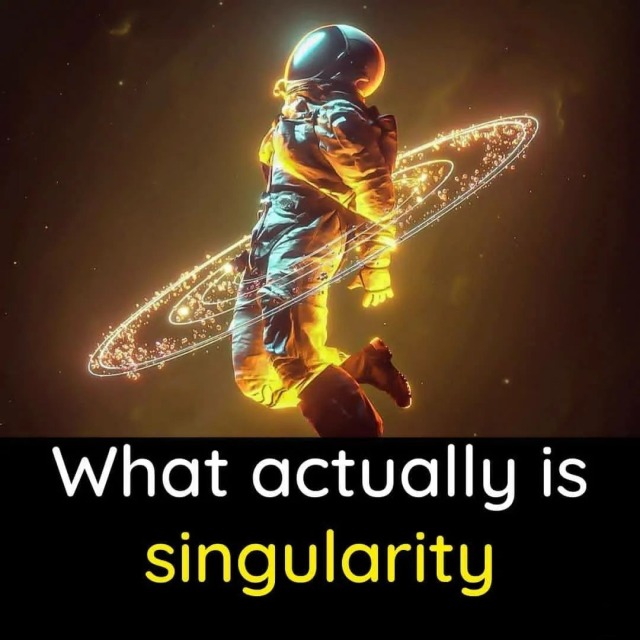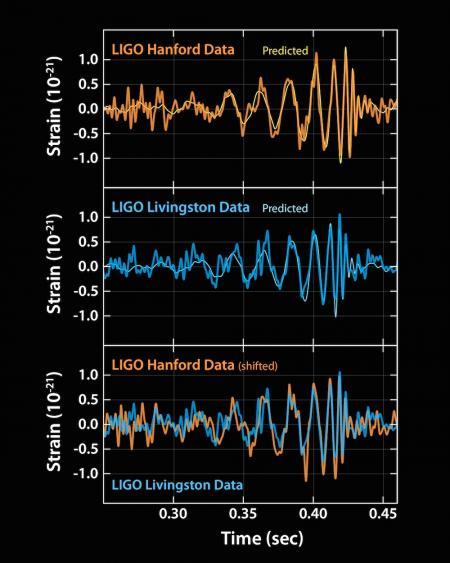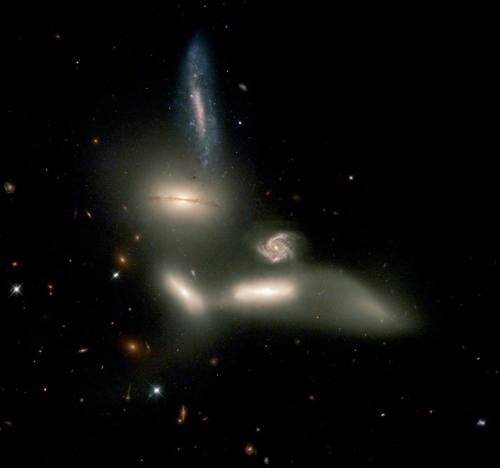#astrophysics
“I don’t know anything with certainty, but seeing the stars makes me dream.”
―Vincent Van Gogh
Post link
Dark Matter Did Not Dominate Early Galaxies
A new study finds the mysterious substance was at most a minor constituent of large galaxies in the early universe
Although the invisible substance known as dark matter dominates galaxies nowadays, it was apparently only a minor ingredient of galaxies in the early universe, a new study finds.
This new finding sheds light on how galaxies and their mysterious “haloes” of dark matter have changed over time, researchers said.
Post link
Enigmatic Deep Space Flashes Could Be Powering Alien Spaceships, Say Harvard Scientists
By Paul Ratner
Two Harvard astronomers published a paper with an imagination-grabbing explanation of Fast Radio Bursts (FRBs), mysterious space signals that were first observed in 2007. These bursts are likely to be coming from galaxies billions of lights years away and have enormous energy to be visible from such a distance.
The powerful bursts are millisecond-long and while only 18 of them have been recorded so far, scientists think there could be an estimated 10,000 FRBs speeding through the cosmos every day. Previous theories proposed their sources to be newborn neutron stars or even nebulas powered by pulsar winds. But no concrete originator of the radio waves has yet been identified. This led astronomers at the Harvard-Smithsonian Center for Astrophysics to theorize that the signals could potentially be coming a device that someone created.
Post link
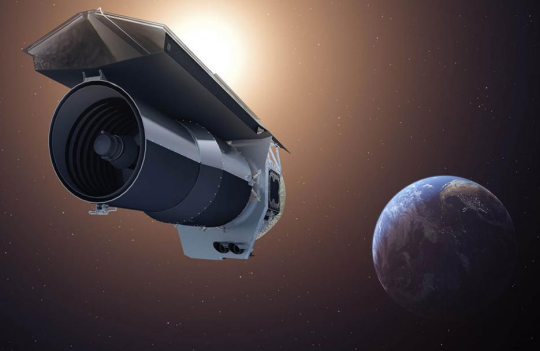
NASA’s Spitzer Space Telescope, an infrared telescope studying our solar system, is finally coming to the end of its life. At the end of January 2020, in anticipation of the upcoming James Webb Space Telescope launch in 2021, NASA decided to end the telescope’s mission, power down its primary systems, and effectively discontinue further scientific research. The decision marked the conclusion of a 16-year campaign, which was initially intended to only be five years in duration. During its extended lifespan, Spitzer made significant contributions to our knowledge of the universe, including insight into our own origins and the evolution of galaxies.
Continue Reading

Astronomers at the University of California, Riverside have discovered a peculiar ultramassive galaxy that existed for only a brief time in the early universe before becoming inactive. The ultramassive galaxy, known as XMM-2599, exploded with star formation before the universe was even 2 billion years old. By 1 billion years after the Big Bang, the galaxy had formed a mass equal to over 300 billion suns—the single most massive galaxy we’ve ever discovered from that timeframe. By 1.8 billion years, the galaxy had stopped formation entirely, which poses a fascinating question, why did it suddenly stop?

Discovering signs of extraterrestrial life in the universe has been a highly sought-after field of inquiry throughout much of scientific history. Finding other life forms, whether they’re microscopic or similar to us, would undoubtedly revolutionize many areas of science and how we understand our place in the cosmos. While no real evidence has been found supporting the existence of extraterrestrial life, there are quite a few institutions dedicated to the search—and that search is continuing to get bigger.
The SETI Institute, one of the pillar institutions for the search, is ramping up its efforts by funding a variety of new initiatives…Continue Reading
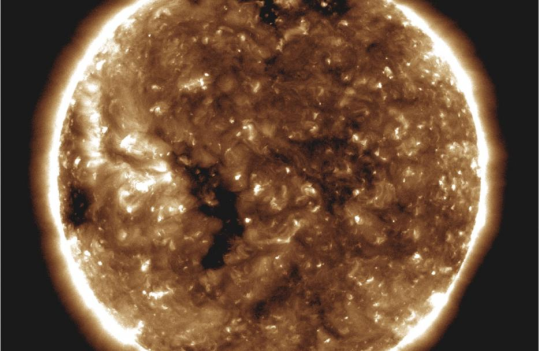
On November 11th, 2019, the NASA Parker Solar Probe (PSP) successfully completed its third rotation around the Sun, in an ongoing effort to collect detailed data about the heliosphere region. The probe is the closest any spacecraft has come to the Sun, which allows the onboard instruments up-close access to its structure and inner workings. PSP is set to make 24 orbits before ending its mission, with eventual iterations moving the probe closer and closer to the Sun. Despite only being two years into its journey, PSP is already providing a great deal of valuable data.
Spectacular image of the spiral galaxy NGC 7331 captured by the Hubble Space Telescope. It’s located around 45 million light-years from Earth, residing in the constellation Pegasus.
I don’t know about you, but this is one of the sexiest pictures of a galaxy I’ve ever seen. This galaxy knows it’s fine af—showing off its lovely and colorful swirling arms. Fuck me.
Credit: ESA/Hubble & NASA/D. Milisavljevic (Purdue University)
Post link
Search for Hidden Asteroids with the Hubble Asteroid Hunter
This picture is the parallel field for the galaxy cluster Abell 370. Assembled using multiple images captured by the Hubble Telescope, the light arced trails are from over 20 distinct asteroids moving along their orbits.
Post link
3D Map Shows The Milky’s Perplexing Curves
Astronomers have created a new 3D map of the Milky Way galaxy, and in a new paper published in Nature Astronomy, illustrate that the galaxy as a whole has a warped structure, progressively twisting out into a spiral.
This isn’t exactly the biggest surprise. For decades, astronomers have observed a twisting pattern of hydrogen gas out in the far reaches of the galaxy. But since that gas layer extends so far out, it was never really clear whether individual stellar bodies in the galaxy were exhibiting the same kind of warping, and whether there was a consistent warp throughout the Milky Way.
This new 3D map wasn’t even intended to trace the galaxy’s warp. “Most science is serendipitous,” says Richard de Grijs, an astronomer based at Macquarie University in Sydney, and a coauthor of the new study. It was his former graduate student, lead author Xiaodian Chen, now at the National Astronomical Observatories of Chinese Academy of Sciences, who had previously compiled a large collection of observations of over 50,000 stars in the galaxy, particularly in infrared. Chen decided to use observations of the Cepheids—a class of young, bright, pulsating stars—to attempt to outline the shape of the Milky Way.
The Cepheids are particularly useful for any astronomical investigation requiring you to trace distance through outer space. They show period changes in brightness over time, and measuring the cycles in those brightness can basically tell you the distance between two points down to an incredibly accurate scale. And since dust and gas doesn’t absorb much of the light on longer wavelengths, astronomers use infrared to look at those cycles.
And while the warping of the galaxy isn’t a new revelation, Elena D’Onghia, an astronomer at the University of Wisconsin who was not involved with the study, thinks it’s interesting how the team took advantage of the Cepheids in creating the new galactic map that can characterize the warp at a rather high accuracy.
D'Onghia does note, however, that the origin of the warp still needs a more detailed explanation, especially since the hydrogen gas still seems to twist more rigorously then the stars do. “It could be due to torques exerted by a large satellite galaxy like the Large Magellanic Cloud, or the Sagittarius dwarf galaxy that impacted the Milky Way disk not long ago,” she says. “It could be by torques exerted by the inner disk, as the authors claim. [They] do not really explore the different ways to generate the warp as compared to the data.”
Still, there are some larger astronomical questions the findings ought to help resolve, especially when it comes to dark matter. About 85 percent of the universe is thought to be made of dark matter. We can’t directly observe it, but its presence is implied because it gravitationally affects the movements of other celestial structures whirring around through outer space. “We know we need it to explain the motions of the stars in the Milky Way,” says de Grijs. Understanding the shape of the Milky Way means we can get a better handle on where that dark matter is located in the galaxy.
The findings also ought to help the European Space Agency’s Gaia mission, which is tasked with making observations of approximately one billion astronomical objects (about one percent of the Milky Way galaxy). The new map could give the Gaia project a benchmark with which to compare measurements as they come in.
And let’s not forget that Chen’s catalog of 50,000 is ripe for more thorough analysis to unveil more mysteries of the Milky Way. “There’s a lot more we can do with this and continue to explore what’s in the data,” says de Grijs.
We are so excited to unveil the latest season of Breakthrough, a short film anthology from Science Friday and Howard Hughes Medical Institute (HHMI) that follows women working at the forefront of their fields. Breakthrough hopes to inspire a future generation of women to lead careers in STEM. New episodes drop weekly OR catch the entire series now on Alamo On Demand.
Learn more at BreakthroughFilms.org. If you are an educator or career counselor, don’t forget to check out the Breakthrough Inclusive Action Tool Kit.
For when you’re a space witch but you’re also a scientist and your data need a magickal intervention.
Post link
The Importance of Gravitational Waves
On the morning of September 14, 2015, the Laser Interferometer Gravitational-Wave Observatory (LIGO), twin detectors located in Louisiana and Washington state, observed signals of ripples in spacetime. Also called gravitational waves, LIGO physicists have concluded that the waves were produced by the merger of two black holes.
By analyzing the signals, it is estimated that the two black holes had a mass 29 and 36 times greater than the Sun and is located 1.3 billion light years away. Based on the small time difference between the two detectors, it was determined that the source is located in the southern hemisphere in the direction of the Magellanic clouds.
100 years ago, Albert Einstein predicted the existence of gravitational waves with his theory of general relativity. In the 1970s and 80s, Joseph Taylor, Jr. and colleagues demonstrated the existence of gravitational waves through the discovery and observation of a pulsar-neutron star binary system.
Gravitational waves are important for studying regions of space that electromagnetic waves cannot reach. Such regions include, but are not limited to, the horizon of a black hole and the early moments of the Universe.
If you missed the announcement, there are press releases from LIGO,NASA,CalTech, and the media. The press conference is available on YouTube. The discovery was accepted for publication in the Physical Review Letters journal and a repository of other papers are available from LIGO. If you enjoy coding, there is an iPython notebook about signal processing with open data from LIGO.
Image: The plots show the signals recieved by each dectector, along with what is predicted by general relativity. The observed signals closely match the predictions. (Credit: LIGO)
Post link
MUTUALLY ASSURED DESTRUCTION
In the constellation of Serpens Caput (Serpent’s Head), this tightly-packed group of galaxies is slowly tearing itself apart.
These beautiful scattered jewels are collectively known as Seyfert’s Sextet, but although the name implies “six,” only four of the visible galaxies are locked in the dance of death. The still-intact spiral galaxy near the middle of the image is about five times more distant than the main group, and the sixth member is actually a tidal tail resulting from gravitational interactions.
The gravitational forces that are warping and blurring these galaxies may someday pull them together into one single galaxy, but such cosmic changes take time. The gravitational interactions we see here happened over billions of years, and the dance is likely to last billions more.
-RLO
Image: NASA/ESA, J. English (U. Manitoba), S. Hunsberger, S. Zonak, J. Charlton, S. Gallagher (PSU), and L. Frattare (STScI)
Source
Post link
Explore every gravitational wave event spotted so far
Caption:
Gravitational waves, produced when behemoths like black holesandneutron stars spiral inward and merge, have been spotted 50 times (each event represented with a large circle above). Nadieh Bremer- Visual Cinnamon
Post link



